| |
Issue 8 : July 2011 |
The performance improvement program continues five months between newsletters last time, four months this; moving back towards our target of a quarterly letter! Life is good; business is good, the performance improvement in newsletters is not related to a lack of things to do. Singapore and much, if not all, of the rest of Asia is booming. But those I meet from Europe suggest a rather different picture. As they do, the question in my mind is, "Why there is so much investment in container ships to service the Asia to Europe trade?". This is examined below.
This time we are also making a few comments on the cruise and marina sectors in Asia, taking a cursory look at the rationale and benefits |
 |
of these more entertaining elements of our business. Sorry to be a touch negative when the work is so very interesting, all clients reading please understand we just need to be realistic if we are going to make things work for your business!
There is also a few words about aid, something the more we experience the more we doubt the real benefits; it is rather more encouraging to watch the emerging economies evolve their own ways forward perhaps based on the best practice of others, but clearly in their own ways.
As always it will be interesting to get your feedback on our opinions and comments in this newsletter, just contact me on [email protected]
|
Why so many ship orders and why so large?
The container shipping sector was hit badly by the financial crisis. Companies haemorrhaged cash. Bail out followed bail out. You would have thought that everyone would learn lessons on gearing and risk. But, in recent months we have seen mega order after mega order. Maersk has exercised options to build ten more 18,000teu ships, four months after ordering 10 similar ships from DSME.
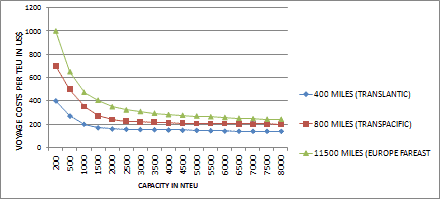 |
|
APL/NOL has ordered ten 14,000teu ships from Hyundai and two 9,200teu ships from DSME and upgraded an order of ten 8,400teu ships to ten 9,200teu vessels. So, is everyone in such a good condition less than two years on from the sectors near death experience |
that they have plenty of cash and see a large gap in capacity that they need to fill with ever bigger ships? Only Evergreen and K Line have explicitly said they are staying out of the market for mega ships at the moment.
The immediate prospects for the Europe to Asia and the transpacific trades must be considered weak. In just a few days we heard of CKYH Alliance withdrawing capacity from Asia to Europe because of the “poor freight rates” and had The New World Alliance (APL, MOL and Hyundai) cutting capacity on the transpacific trades. The most interesting thing is that the capacity cuts have had little impact on the box derivatives trade, suggesting many people think there is still overcapacity. The bright spots for the sector are the addition of new services such as the announcement by Evergreen Line, Wan Hai Line and Interasia Lines of a new weekly service connecting Chennai port with Taiwan. As a senior executive in a shipping line said recently "Long-haul routes aren't doing as well as we expected but growing intra-Asia trade is providing cascading opportunities for mid-sized ships..." The implication within the statement is that you need bigger ships to release medium sized ships into the new trades, perhaps a misreading of the intent but perhaps close to the truth.
| The new mega ships cannot be used on the expanding trades. They need the medium sized and smaller ships which are more flexible. We all seem to agree that the really big ships only work on the bigger and longer distance trades; the trades that are not doing so well. Published research by Cullinane and Khanna, offers a graph showing cost per TEU against distance and ship size. This clearly shows that, as ship capacity increases, the advantage of a bigger ship stabilises no matter what |
|
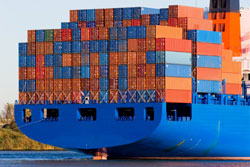 |
the length of the route. Bear in mind this assumes that the ships are fully utilised. So the conclusion reached is that for a modest additional advantage in per TEU cost, people companies are choosing to order larger ships that must be draining their ability to finance and putting strain on their cash flow. This all must give them some problems in meetings with their banks as they talk about finance with them. Further pressure in these situations results from specialist media reporting the views of Drewry Consultants that long haul box rates will fall a further 20% this year! Presumably the banks must have some thought to the wisdom of the lines investing heavily in big ships; it certainly is somewhat unclear to me! Why are otherwise well managed companies putting their futures on the line, fixing their sunk costs ever higher and draining their cash away. Are they, as some cynics may suggest, trying to make their failure as much a problem for their Governments and their banks as possible? A bit more on this subject in my new regular opinion column in Baird Maritime (see the later News Item).
Marinas in Asia
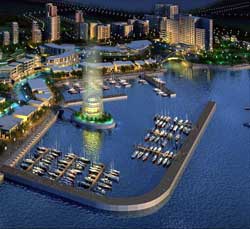 |
|
Marinas are like a Harley Davidson. Not often do you hear that said! But, to an extent it is true. Harley Davidson do not sell Motorcycles they sell a lifestyle. Marina’s, done properly; also sell a lifestyle, a lifestyle that is very seductive but one that Asia does not yet seem to really “get”. Our involvement in marina projects has bubbled along. The architects and real estate agents pushing the additional value added by a marina to their property developments. Figures like a 25% uplift or more on the value of condominiums and town houses are often quoted. That said, I cannot remember ever being in a marina development in Asia that compares to those experienced in Australia, the US or Europe. |
In recent years, visits to marina’s in Asia from Singapore to Miri, through Bali and in various places in China suggest a very different image and picture. The clientele is different as well as the image and feel they provide. The pleasant clattering of yacht masts is replaced in Chinese marinas with fleets of impressive motor launches or few users at all (which is worse). In Miri, the feel is more of car park than a thriving hub for a social activity; that said at least it looks full! This suggests that marinas do not yet have the same cache in Asia as in some other parts of the world. This is not to say marinas will not develop this, as the new middle classes find they have more leisure time and seek ways to spend their increasing disposable income. But today to defend any uplift in value based on a pleasant marina culture generated by the users and activity within the marina is a stretch. By saying that I am aware it calls into question the business plans associated with of a lot of marinas in Asia. These often seem to focus more on selling property than creating the culture and activity that creates the value proposition being sold. Not to say that they cannot be made to work, just their plans need to be richer, driven by a range of potential revenue sources that are based on a sound understanding of their users and how to engage effectively with those users. Not, as many seem to suggest, a simple and cheap add on to a property development that raises the capital value to everything around it.
News Item: Baird Publications
I always wanted to be a journalist. Well, not really, but how else do you raise the subject of your new regular column and explain why an engineer is writing for Baird Maritime? They employ real journalists; ones that I have been interviewed by in the past, in another life and for another magazine! I am writing once a month and my very first article appears in the July 2011 issue. Unfortunately it is a bit like this newsletter; one of the hardest things I do each month. It is only to be hoped I do not make a fool of myself and others appreciate the effort (apart from my wife of course).
Developing Capacity and Capability in Government
| In the last year I have worked closely with a number of Governments (their civil servants mainly) and witnessed the process of policy development. The key issue this highlights to me is the capacity and capability within Government and supporting Government to assess and deliver effective policies. On a number of occasions I have been witness to advice being given that defies logic or does not deal with the reality of the situation on the ground. Consultants who only see half the story and |
|
 |
because of a lack of domain knowledge deliver advice based on forcing template solutions and generalisations into very specific situations where they do not fit.
Spare a thought for the consultant though. Often the client, sometimes an aid agency, provides a brief that constrains the advice that can be given. Then, often suddenly, when the answer is “if I were trying to go there, I would not start from here” they rapidly lose patience and interest and promptly throw the baby out with the bath water. Strangely the aid agencies most professing the long term and socially conscious approach are the worst offenders. They do not like or are not able to confront their own failings. Nothing is as myopic as someone not wanting to see their own faults.
It makes me wonder at times how it is possible that Governments ever makes progress; something that in Asia it clearly is doing. Recent involvement in a well organised “laboratory” in Malaysia does spark more confidence and belief. Close interaction between policy makers, industry and those responsible for implementing policy was close to be inspiring to a cynic. The combination of stakeholder feedback and capacity development in the context of a clear policy aim was encouraging. The drive and enthusiasm of the Government organisers was perhaps the most impressive aspect. They want to press forward and do things, a sharp contrast to many of our interactions with Government where inaction and trying to ensure no blame can be attached to any action seem to be the preferred outcomes.
Growth and Benefits from the Cruise Sector?
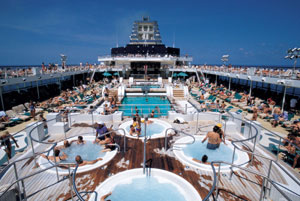 |
|
The cruise sector offers significant opportunities to advance the economy of countries and destinations the ships visit; this is certainly what many countries in Asia believe. The impression at times is that the sector is similar to a favourite uncle that comes to town and buys you the best presents. In some ways that has been the experience of Asia. Cruise has mostly meant world cruise ships and expedition cruise ships that require relatively modest investment in facilities and efforts to allow them to bring their |
passengers to your city. When they come, the passengers, if they get off the ship, spend good money in your shops and pay to see your tourist attractions. As they do so they rack up spending in the order of US$ 100 per head and more.
However, things are changing; your favourite uncle is thinking about moving in! Growth in the cruise sector in the US is slowing, Europe has maintained strong growth but the impact of the Arab spring and economic concerns questions the ability of this market to continue to grow quickly. The big cruise lines are looking to Asia as one option to continue their high rate of growth. RCCL has undertaken trial deployments and is now committing over a longer term. Aida and Costa have also been doing more than talking about pushing into the region with more permanent deployments. Singapore and Hong Kong are investing heavily to ensure they become the base for those ships.
The ships when based in Asia need itineraries. A lot of potential destinations are eying the potential to attract fifty calls a year from ships with a few thousand passengers on board for each call. That would be an interesting boost to your economy, perhaps. There are differences; the ships based in Asia will be marketing heavily on having great onboard facilities. There will be rather less emphasis on where they are going compared to the world cruise ships. Getting people off these ships and spending at the same level as world cruise passengers may be a lot harder than destinations are used to, if they have any current experience of cruise calls that is. Personally I think we can look forward to plenty of work helping destinations package and then sell to cruise passengers on these ships as they realise to really benefit they need to work rather harder and ensure they are measuring their level of success.
Indian Transhipment Terminals...
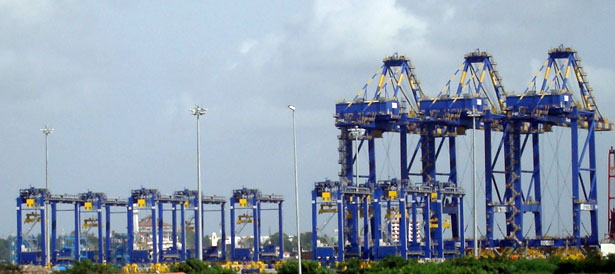
Many of you know that ideas and plans for transhipment terminals are not uncommon in India. It was still a fascinating experience looking at the bid document for the management of a terminal in Southern India that though nodding at the idea of local traffic was heavily dependent on transhipment traffic. The really interesting bit was that a couple of months earlier I was looking at a site where such a terminal could be provided for a fraction of the cost as part of an existing port where the access channel and associated infrastructure could be shared with other users. It was in a different state mind you; so much for central planning.
|